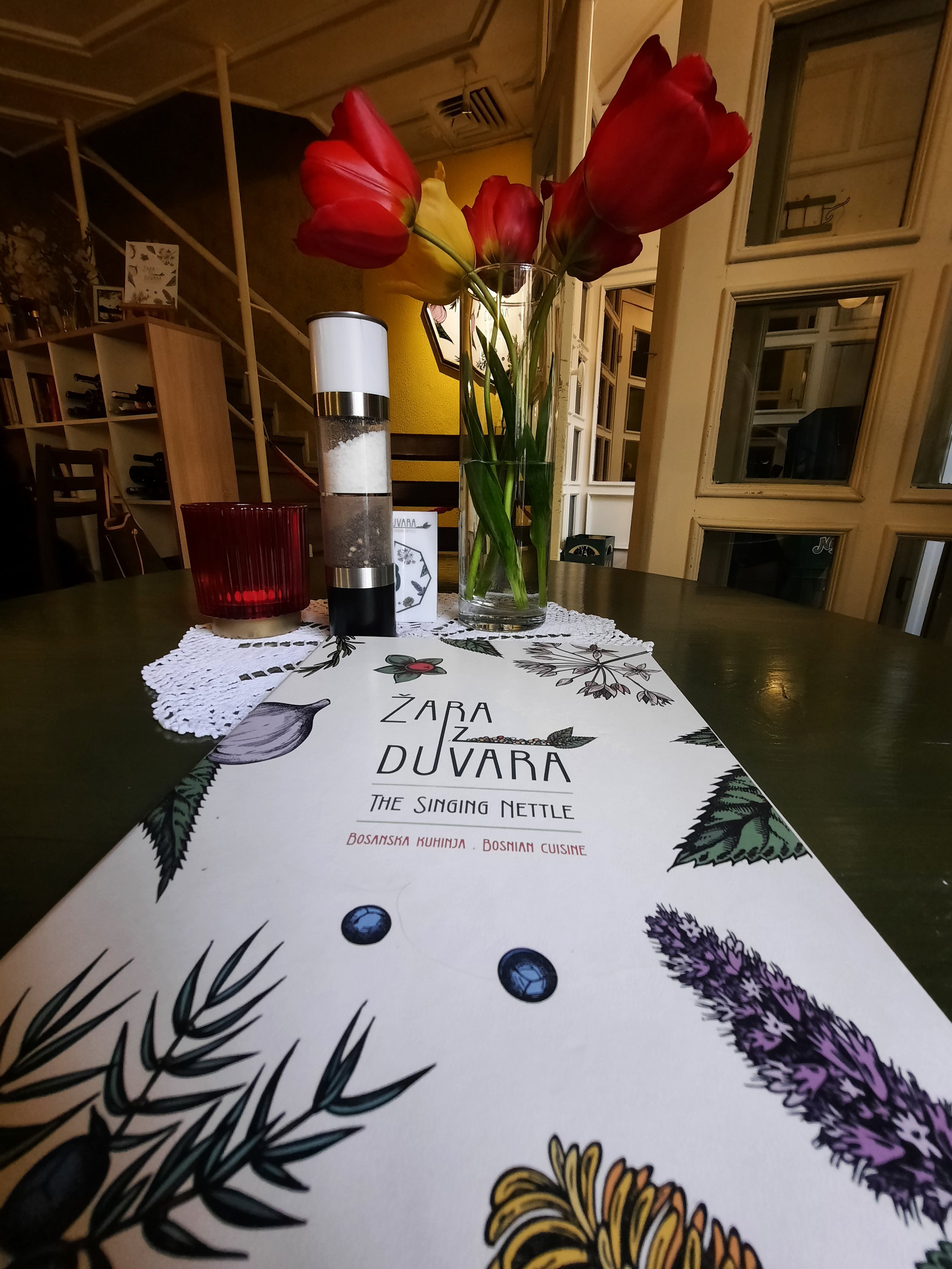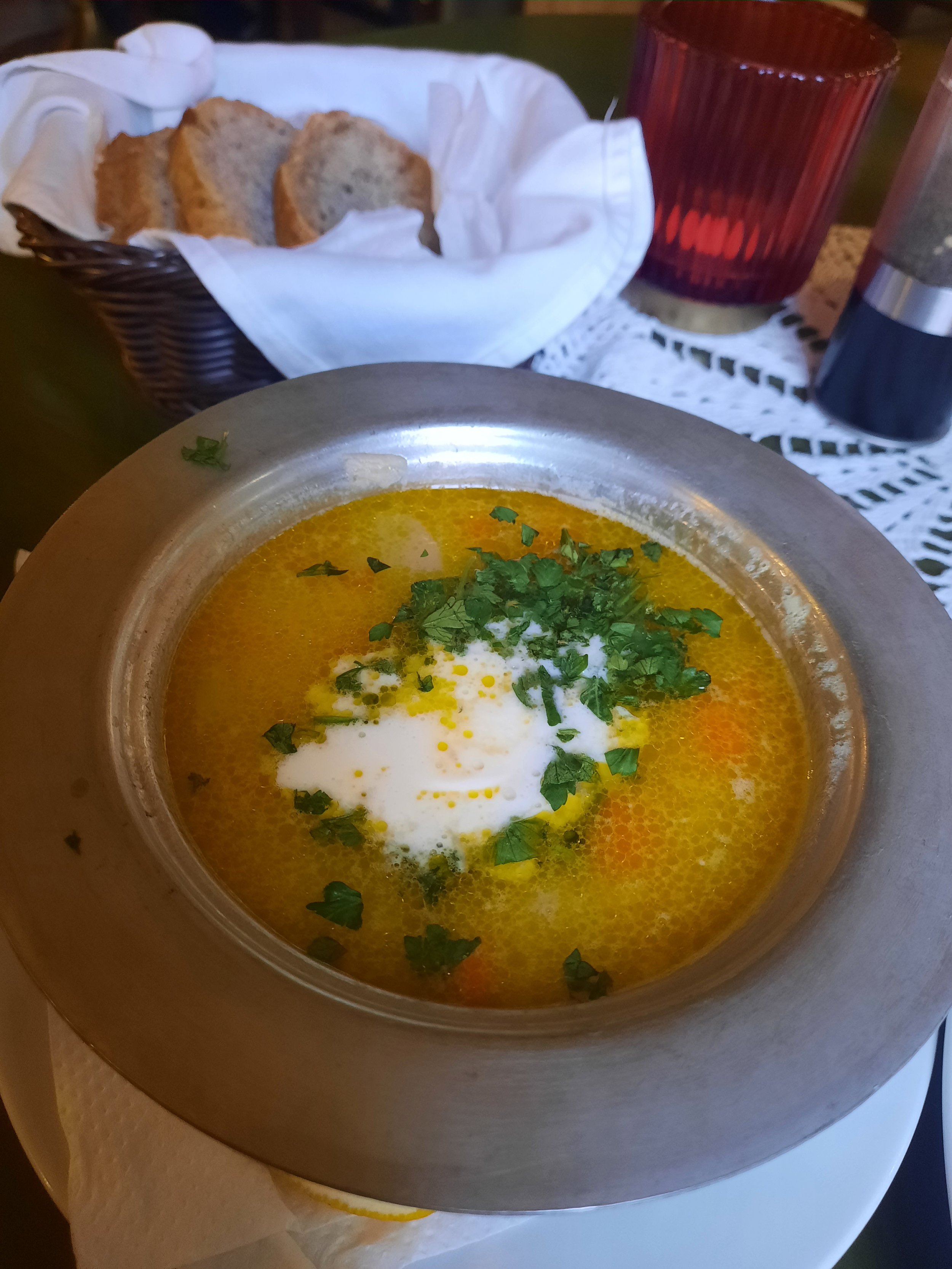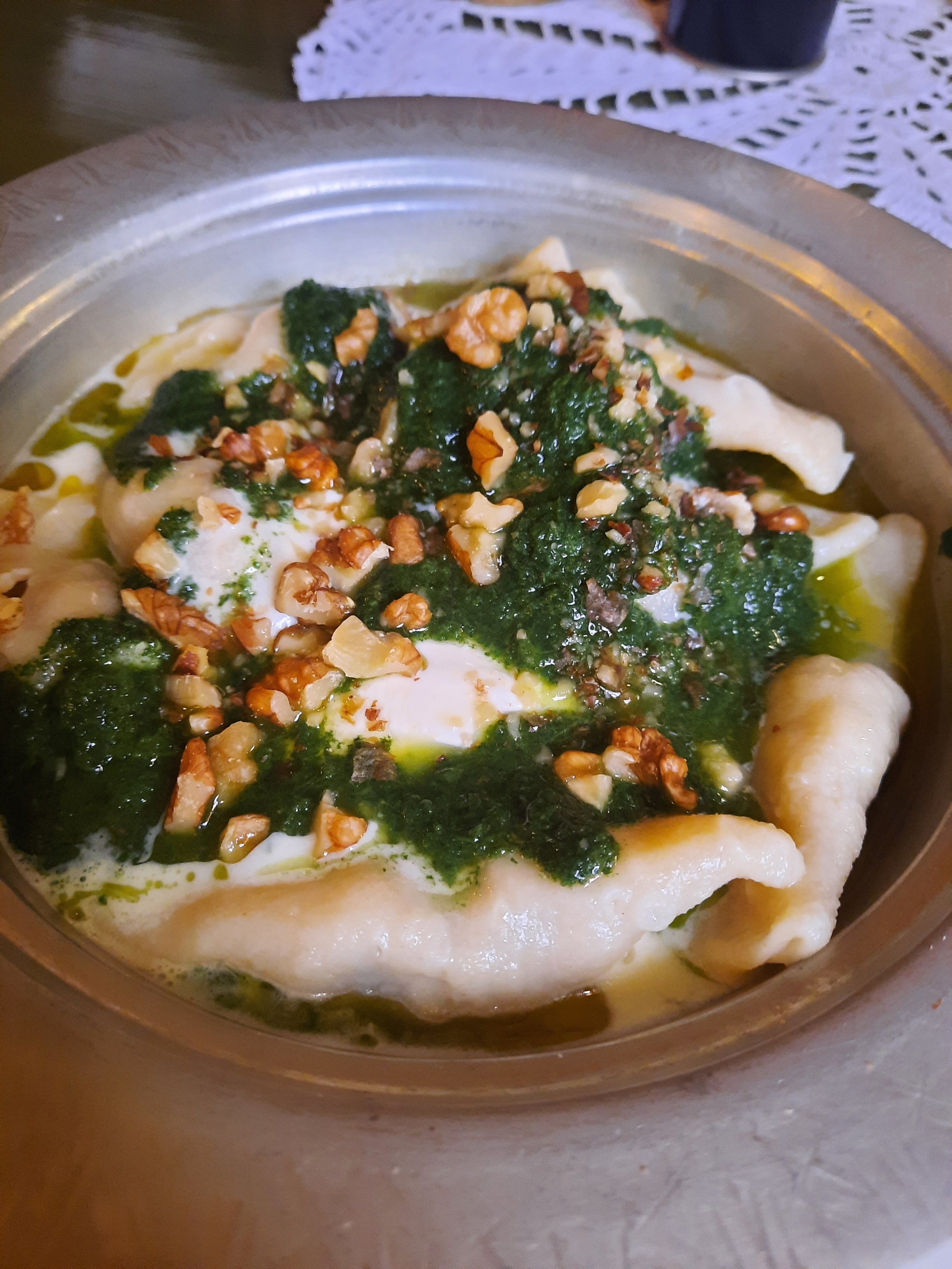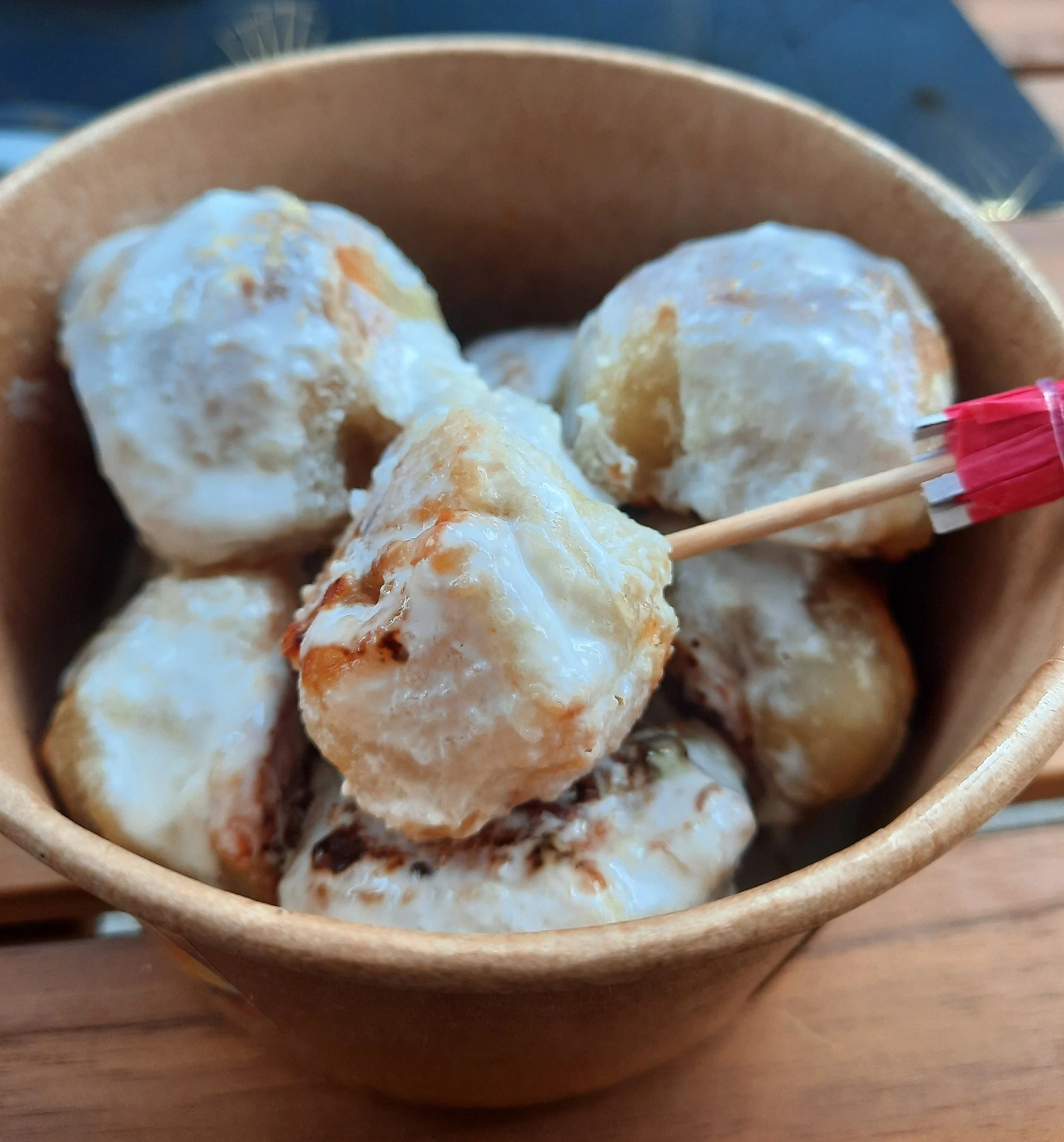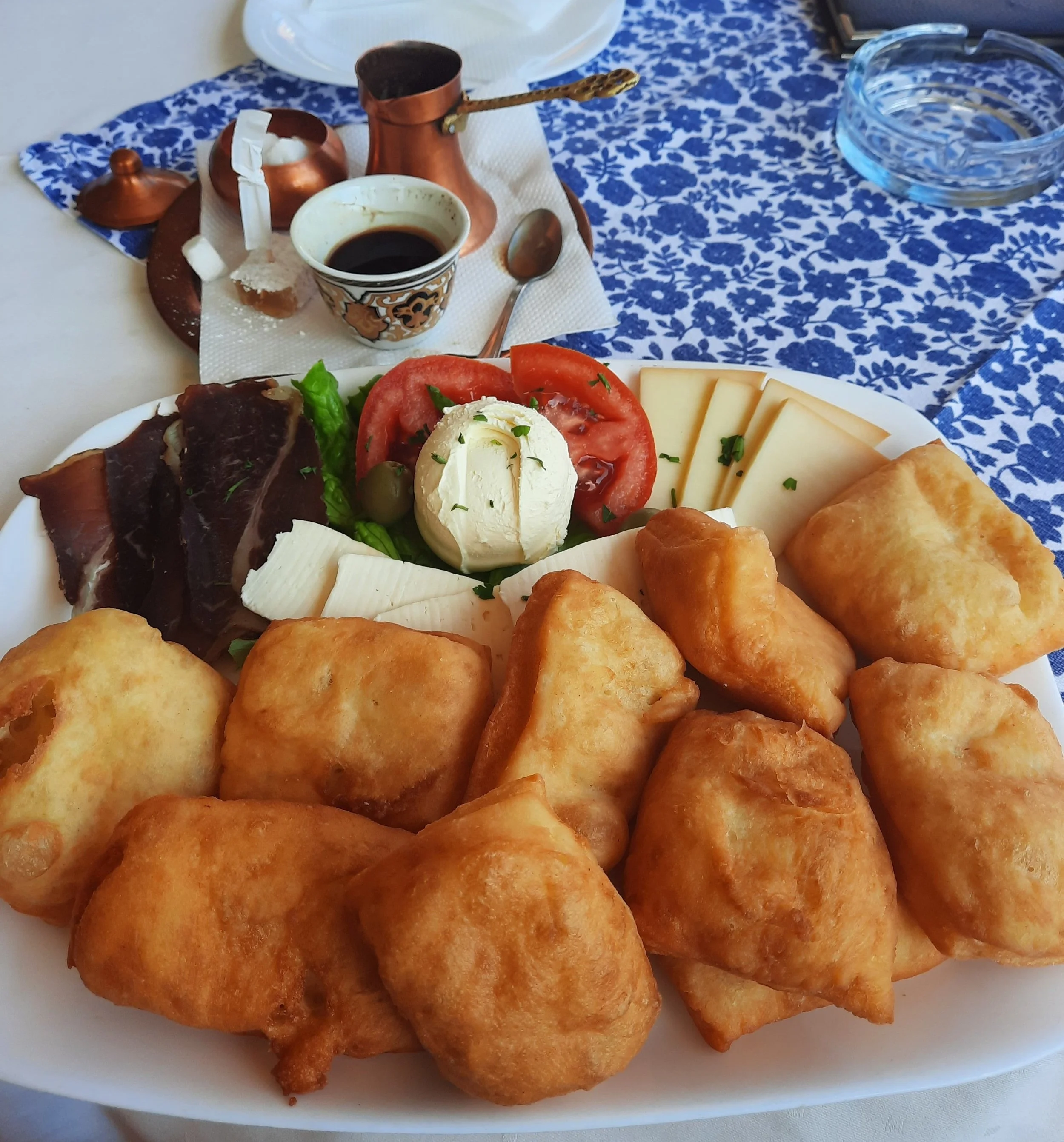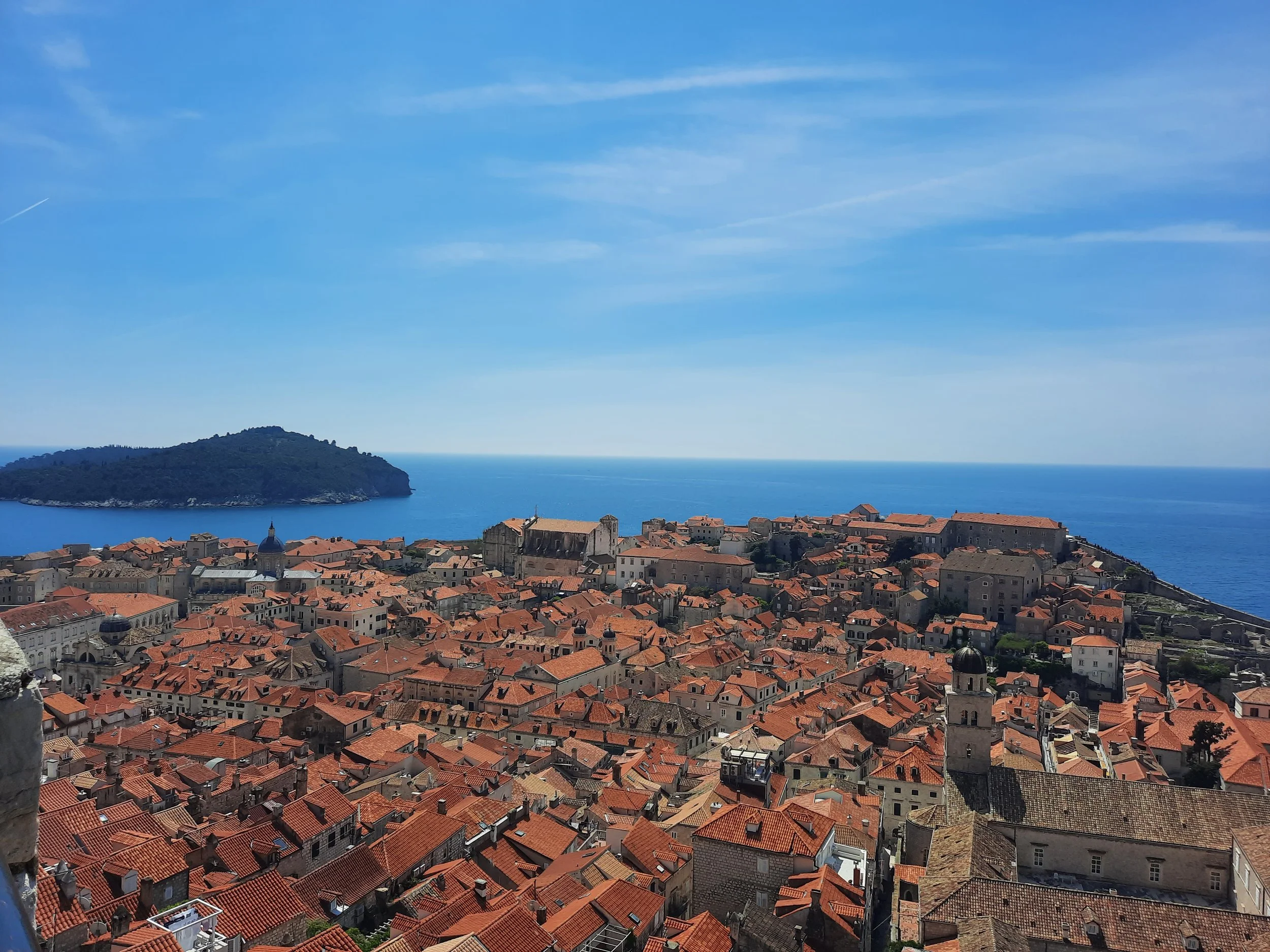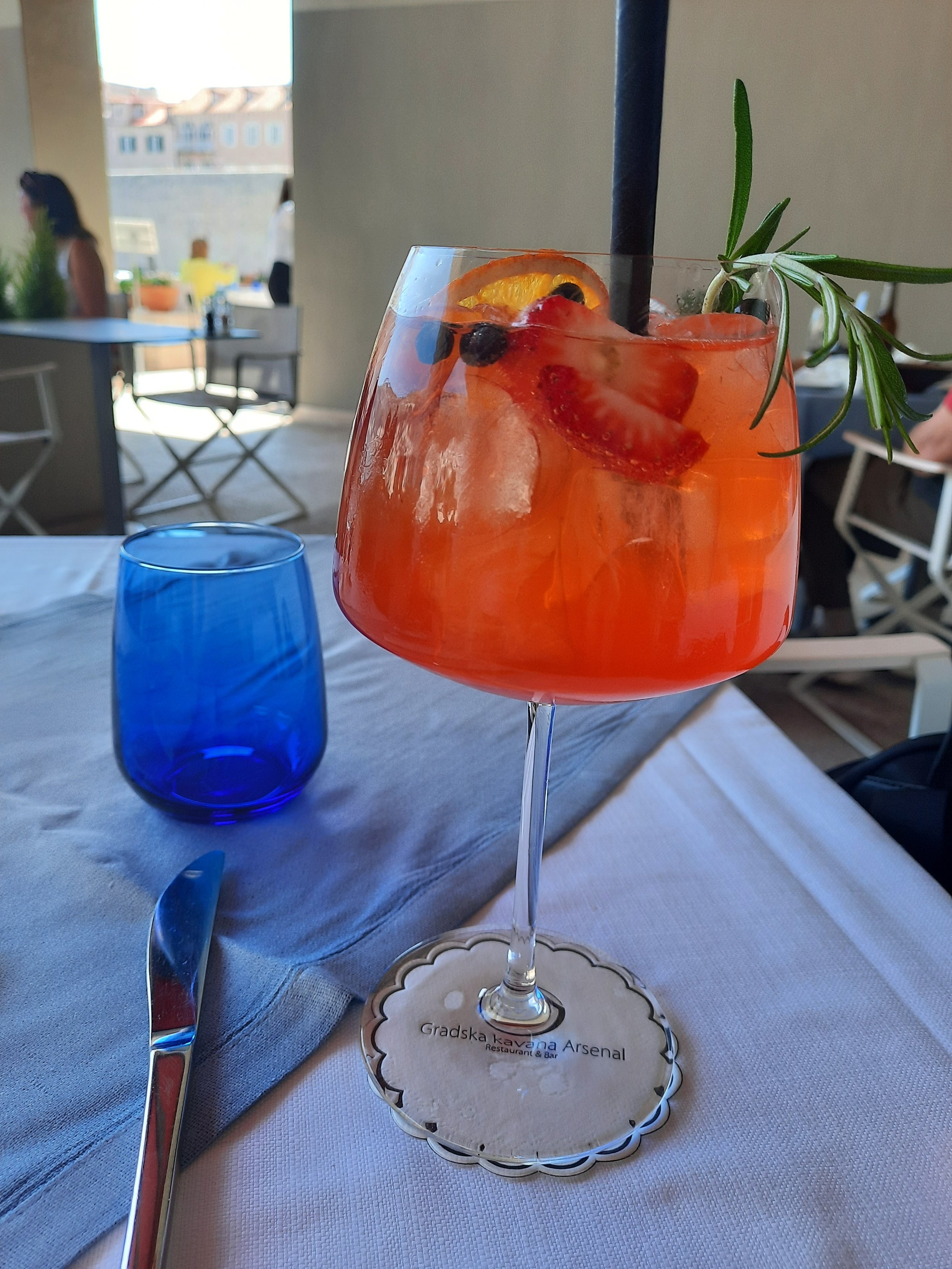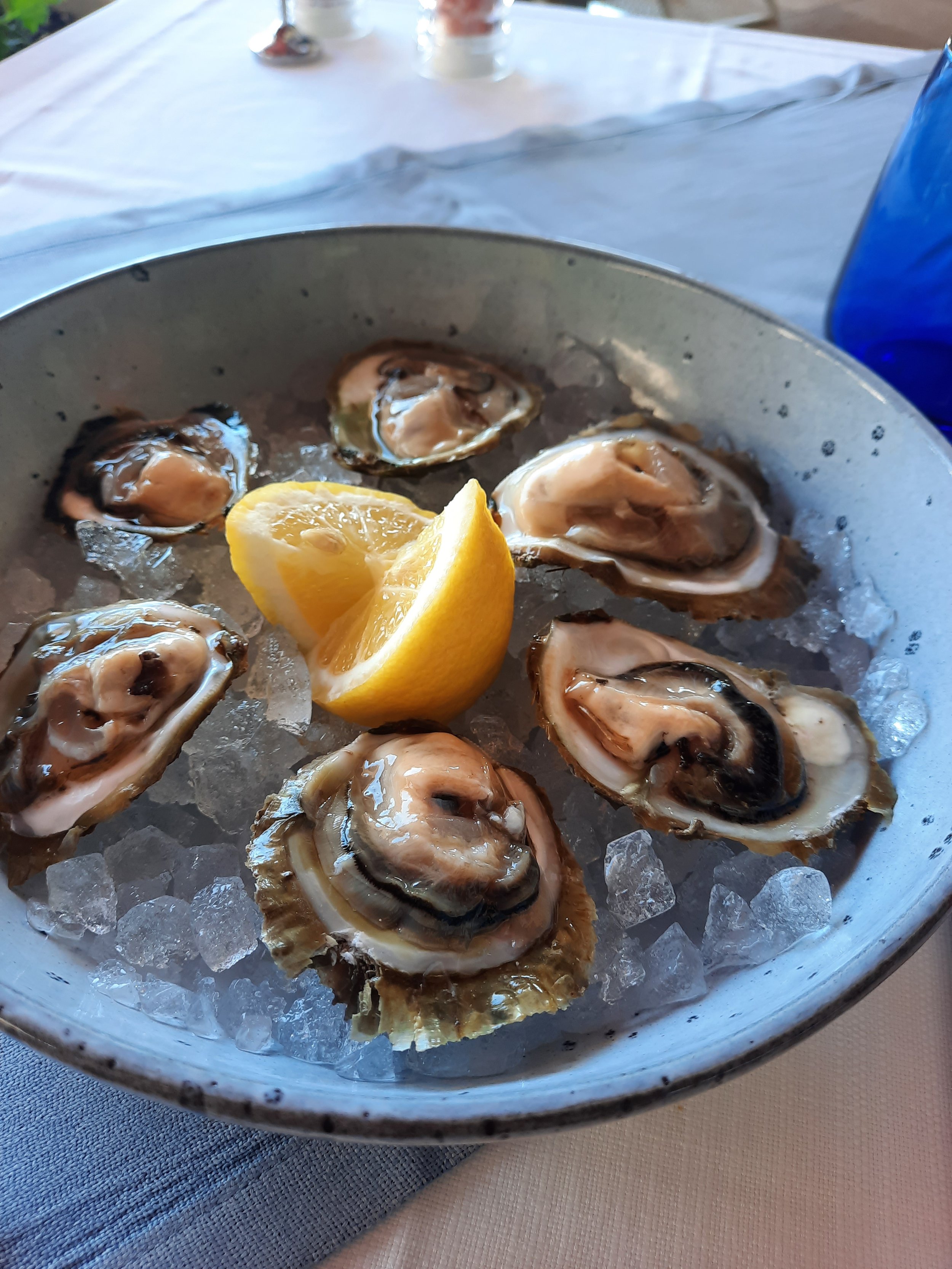An Exhaustive List of All the Amazing Food I Ate in Bosnia
Wandering through Mostar, Bosnia & Herzegovina, after one of my all-time best breakfasts
When I first planned my trip to Bosnia and Herzegovina last month, food was the last thing on my mind. A bit of brief research seemed to indicate that Bosnian cuisine was very close to Turkish cuisine, with a bit of Central and Eastern European influence. In other words, it seemed to be familiar enough that it didn’t really excite me.
Not that I don’t love Turkish cuisine—I do. But I also live in Jordan, where the food is just out-of-this-world amazing and plays heavily with similar flavor profiles. And while I don’t want to alienate any Turkish readers out there, I have to admit that I would take Levantine (Jordanian, Palestinian, Syrian, and Lebanese) cuisine over Turkish any day.
So when I started out planning my trip, food wasn’t really in the foreground.
Until I started talking to people who’d already been to Bosnia.
One after the next, each of them emphasized the same thing: the food is phenomenal, and possibly one of the best things about the country. By the time I jetted off to Sarajevo, I had a massive list of foods I needed to try during my six-day trip.
Did I manage to eat everything on that list?
F*ck yes. And then some. (Hell, I even managed to fit in a spontaneous day trip to Dubrovnik, where I got to sample some Croatian cuisine—and ate what was undoubtedly the most incredible meal of the entire trip. Don’t worry, I’ve included it below.)
So, without further ado, I’d like to share with you my trip to Bosnia and Herzegovina (and Croatia), as told through the amazing dishes, drinks, and other delights I devoured:
Spoiler alert: an insane amount of Bosnian coffee was consumed during this trip; this particular cup was from Fabrika Coffee, a place I visited several times throughout my stay
I flew to Bosnia and Herzegovina through Istanbul—an overnight journey that doesn’t really allow for much sleep, since both flights are relatively short. (I have an ungodly ability to sleep through any flight, no matter the length—and I slept through both of them, but still felt tired as hell when I got to Sarajevo.) Not wanting to spoil my appetite, I avoided eating anything throughout the journey.
(Can I also go on a bit of a tangent and say how much I hate the Istanbul airport? It’s like it was intentionally designed to be the most miserable, uncomfortable, and inconvenient place on earth. It borders on some kind of dystopian nightmare. I had to transfer through Istanbul once while traveling with my cat, and I end up bloodied, with ripped clothes and a traumatized pet, crying on the floor of a bathroom while a very sweet bathroom attendant went to grab water for both me and Miss Piggy. So there’s definitely some trauma associated with that airport. But even without the trauma, it sucks.)
I landed in Sarajevo around 8 AM and grabbed a taxi to my hotel, the Hotel President, which sits directly on the Miljacka River, just a block away from where Archduke Franz Ferdinand and his wife were assassinated in 1914. After dropping my bags off in my room and freshening up, I had only two things on my mind: food and coffee.
My first stop was Buregdžinica Saraj Bosna, where I grabbed a plate of burek and some kefir. Ground meat wrapped in phyllo dough, paired with a fermented yogurt drink (great for settling the stomach after a flight), was just what I needed to kick off my day.
Kicking off my trip with a massive plate of burek and some kefir
My next stop was a small coffee shop for some bosanska kafa, or Bosnian coffee. After a post-coffee stroll through the Baščaršija, or old town, I stopped for more bosanska kafa at Fabrika Coffee (which would end up being my favorite coffee spot in Sarajevo).
I can’t tell you how much I owe to Bosnian coffee on my first day in Sarajevo: with only a few hours of light sleep during my overnight travels, this potent, utterly delicious coffee was the only thing that kept me going.
That first day in Sarajevo, I paid a visit to the Museum of Crimes Against Humanity and Genocide (which you can read more about in my previous post), and the lump it left in my throat required something strong to wash it down, so I stopped by Café-Bar El Kasbah for a glass of rakija before further soothing my soul with a tour through the National Gallery of Bosnia and Herzegovina.
Rakija is a fruit brandy popular across the Balkans; this particular one was made from plums
I finished my day with dinner at Žara iz Duvara (The Singing Nettle), a tiny family-owned restaurant so charming and whimsical that, if not for the photographic evidence, I could easily have mistaken for some kind of sleep-deprived fever dream. I dined on nettle bread, begova čorba (a traditional slow-cooked chicken soup), and klepe (beef-filled dumplings topped with nettle pesto and walnuts), alongside a bottle of prosecco. As I sat enjoying my meal in this warm, cozy little restaurant (which only sits around six tables), the family who owned the place played with their young son/grandson, making magic wands out of silverware, crowns out of paper, and even setting up a throne for this young boy-prince. It felt like stepping into some wondrous little parallel universe, and it made me want to infuse every day with a bit of magical realism.
I slept soundly and with a deep sense of satisfaction.
The next morning, I woke early and had breakfast at the hotel (admittedly not very impressive), before climbing up to the city’s Yellow Bastion and White Fortress. The latter was still closed when I arrived, but I spotted a tiny footpath leading through a steep slope to the left of the fortress and, with my typical sense of curiosity for these kinds of things, I followed it, all the way up to a cliff overlooking the city and valley below.
The White Fortress above Sarajevo
Back down in Baščaršija, I stopped for more coffee at Fabrica, wandered through town, perused a small antique shop, and then headed over to Franck Experience Store, a coffee shop that takes its coffee very seriously. It was delicious—and a refreshingly modern departure from the continuous rounds of traditional Bosnian coffee.
At Franck Experience Store in Sarajevo, coffee is an art form
By then, it was nearly noon, and I was ready for lunch, so I made my way to Aščinica Stari Grad, a place that felt delightfully traditional—and seemed to be frequented almost exclusively by locals. The food is a home-cooked spread that changes day by day—and is served hot and fresh until they run out. I was lucky to have come early. The waitress offered to make me a plate with a little bit of everything, which I enthusiastically accepted. I received a hearty spread of stewed meats, stuffed vegetables (sarma, dolma, et cetera), and a side of spongy flatbread perfect for soaking up all the juices from the meats and veggies. I savored every last bite. This meal, without a doubt, was one of my favorites in Bosnia.
Words cannot express just how absolutely satisfying this meal was
In the afternoon, I took a cable car up the side of the mountain that looms over Sarajevo, where I wandered through forested paths, visited the abandoned bobsled track from the 1984 Winter Olympics, and enjoyed the sunny weather (a departure from the previous day’s overcast skies).
After a trip to the War Childhood Museum, I once again wandered through the old town, where I stumbled across a small restaurant selling pazarske mantije (Pazarske Mantije – NiNa). The look of these fresh, warm balls of dough—stuffed with meat and covered in a savory yogurt sauce—was too appealing to pass up, and I grabbed a small container, half of which I couldn’t help but consume right then and there. The rest I packed up and, along with a box of assorted lokum and other sweets that I bought from another small shop, took back to my hotel for a light dinner before a very early bedtime.
These mantije were heavenly, and the woman preparing them was so sweet and kind
The next morning, I was up before the sun for an early train to Mostar—a two-hour journey through incredible natural scenery that included snow-capped mountains, charming villages, pristine rivers, and lush, green farmland.
It was still quite early when I got to my hotel (Kriva Ćuprija, a place so charming and with such phenomenal service that I cannot recommend it highly enough; also, the restaurant there is fantastic), so I dropped off my suitcase and wandered over to Hindin Han, where I ordered a breakfast of Bosnian coffee and meza (an assortment of meats and cheeses), served with peksimeti, AKA the best goddamn bread I’ve ever eaten in my life—a fried dough that is salty, savory, and sinfully good.
Hindin Han’s ‘meza sa peksimetima’ joins the ranks of my all-time favorite breakfasts and brunches
Sometimes, the simplest meals are the best—and this breakfast was so simply, utterly perfect that I’ve thought about it every single day since.
I spent my first day in Mostar doing just about everything one can do in the city: I wandered over the Old Bridge; I took a boat ride under the Old Bridge. I visited the kriva ćuprija, a smaller bridge that’s actually older than the more famous Old Bridge (according to the staff at my hotel, it was built as a sort of test run before the larger, more iconic one was constructed); I climbed to the top of the minaret at the Koski Mehmed Pasha Mosque for an incomparable view of the city. I meandered aimlessly out beyond the old town and strolled down narrow streets with a cone of gelato in hand; I toured the Museum of War and Genocide Victims; I lazed around down by the river.
The best view of Mostar can be found atop the minaret of the Koski Mehmed Pasha Mosque, a 17th century Ottoman mosque in the heart of the old town
In the late afternoon, I made my way to the Imaimoze Craft Beer Garden (also known as the Oldbridž Craft Brewery). I ordered a flight of beers, all of which were delicious, although my favorite was the Marakuja, which is apparently one of their best-selling beers, and for good reason: it’s utterly delicious. After finishing my beer flight, along with another glass of Marakuja, I was sufficiently tipsy and ready for dinner.
A fantastic flight of craft beers
I made my way back to Hindin Han, where I managed to get one of the last free tables during the dinner rush. I enjoyed a mixed grill plate that included a sampling of what is arguably Bosnia’s most famous dish, ćevapi (essentially the Bosnian version of kofta, for my readers more familiar with Arabic cuisine), along with veal chops, veal skewers, calf liver, chicken, sausages, and fries. Washed down with a glass of Mostarkso Pivo, it was the perfect way to finish the day and lull me into a deep, heavy sleep.
Meat features heavily in Bosnian cuisine, and I made sure to sample everything I could get my hands on
The next morning, I had breakfast at my hotel—a truly delicious spread that included my new favorite bread, peksimeti. I filled up before my driver showed up to take me on a tour of some sites on the outskirts of Mostar. Our first stop was Kravica Waterfall, a majestic site that genuinely took my breath away. (Plus, as it wasn’t quite peak season yet, it also wasn’t crowded, which made it all the more enjoyable.) I had only planned to visit Kravica and Blagaj (a small town with a Dervish Monastery set against a gorgeous cliffside, along the impossibly blue Buna River), but my hotel staff (who were genuinely so warm, helpful, and accommodating) recommended a visit to Počitelj, a stunning historic village that was the absolute highlight of the day—and one of the best parts of my entire trip.
The village of Počitelj is just a short drive outside of Mostar and was one of my favorite places during my short trip to Bosnia and Herzegovina
After exploring the walls and fortresses around the village, and the beautiful homes and alleyways within these walls, I grabbed some dried figs and fresh dates from a woman on the roadside.
Blagaj was the last stop of the day and admittedly it was a bit too touristy for my preferences, but I managed to have a quick lunch of veal skewers at Mlinica Restaurant, which sits directly next to the Dervish Monastery, along the waterfront.
I was only in Blagaj for an hour, but you bet your ass I managed to get my hands on some more meat, in the form of these delicious veal skewers
I returned to Mostar in the mid to late afternoon and decided to do a bit of shopping in the old town. While I didn’t want to spoil my dinner, I also really wanted to try tufahije, a local dessert that comprises a poached apple filled with walnuts and topped with whipped cream. I devoured one at a small café-restaurant, along with an Aperol spritz, before resting up in my hotel room.
Sometimes you need a little dessert with your pre-dinner cocktail; this tufahije was delicious
My dinner that night, at my hotel, was something I’d had to order in advance, given that it requires many hours of slow cooking: fish sača is prepared by cooking fish and vegetables in a large metal or ceramic dish that is buried in warm ashes and hot coals. The slow process resulted in a succulent, savory, mouthwatering meal, which was accompanied by a wonderfully refreshing salad and finished off with baklava for dessert.
After slowly cooking for over three hours, this fish sača practically melted in my mouth
That day, I’d made a somewhat spontaneous decision to spend the following day in Dubrovnik, and so early the next morning, after yet another wonderful breakfast at my hotel, my trusted taxi driver showed up to take me through the Bosnian countryside and over the border to Croatia.
Dubrovnik, while considerably more touristy than Bosnia (although, admittedly, Mostar is a popular day-trip destination for the hordes of bus tourists), is utterly charming and beautiful.
Dubrovnik is a breathtaking city, but the influx of gimmicky “Game of Thrones” tourism (those who watched the show will recognize it as King’s Landing) is cheesy and, frankly, obnoxious
After trekking the length of the walls that surround the city (stopping along the way for a bellini by the sea) and wandering through the old town, I made my way to Gradska Kavana (Arsenal Restaurant), overlooking the city’s port.
It was there, ladies and gentlemen, that I had the best meal of my entire trip. The Strawberry Spritz cocktail was out of this world (I had two). The raw oysters were the freshest, most delicious oysters I’ve ever tasted: perfectly chilled, served with nothing but freshly squeezed lemon juice. Complete and utter perfection.
For my main course, I enjoyed Dubrovnik’s signature dish: black risotto, a squid ink risotto that was like devouring heaven in each and every bite. It was a euphoric experience. I savored that risotto like I was on another plane of existence, like I was experiencing something akin to nirvana. And to finish off my meal, because I was simply too immensely happy not to order dessert, I dug into a superb crème caramel.
There are certain meals in life that make you feel more alive—that overwhelm you with a feeling of being fully present, fully in the moment, that rush over you like a swell of immeasurable gratitude for life’s small joys. This was one of those meals.
I spent the rest of the afternoon wandering aimlessly through town. I found the hole in the city wall that leads to Buža Bar and climbed down to the sea, where I took off my shoes and rested my feet in the cold Adriatic waters.
Before heading back to Mostar, I grabbed a cone of gelato and sat next to a fountain in a busy square, in my own happy little world, oblivious to the hordes and the tour groups and the crowds.
That feeling—of being perfectly content and fulfilled in your own company—that’s why I travel solo. And great food, enjoyed by yourself, with complete awareness and zero distraction, is one of the best ways to achieve that feeling.
There’s also something to be said for the connection between food and hospitality: I find that the warmest, most hospitable people on earth have a tendency to show their generosity and warmth through food. Great food, made with love and care, is usually a sign of a warm, open culture—and both Bosnia and Croatia left me with a lasting impression of unforgettable hospitality.
When I left Mostar the next morning to take the train to Sarajevo (where I spent one more day before flying back to Amman), my taxi driver—the same one who’d been my guide the two previous days—gifted me a box of Turkish delights as he dropped me off at the train station. It was such a sweet, unexpected gesture. I placed the box in the bag with the breakfast my hotel had prepared for me (another lovely gesture) and made a promise to myself: Bosnia hasn’t seen the last of me.
Hospitality and food go hand in hand, and Bosnia is overflowing with both





